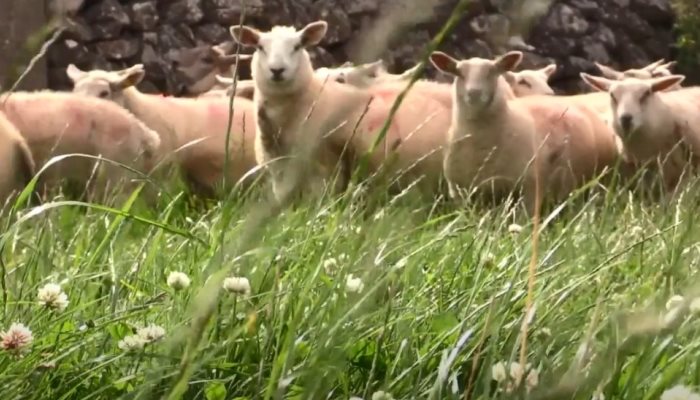19 April 2022
Over-sowing white clover in sheep swards

White clover has the potential to reduce the amount of chemical nitrogen fertiliser required for grass production and also has been shown to improve lamb performance when included in grazing swards. Philip Creighton, Teagasc Researcher, Athenry discusses over-sowing white clover in sheep swards
While incorporating clover as part of a reseeding programme is the easiest way to introduce clover swards, over-sowing into existing swards is another option to take advantage of the benefits of white clover.
Key areas to focus on
Some of the key areas to focus on when over-sowing white clover into sheep swards are:
Soil fertility
Soil pH should be between 6.0 and 6.5, and soil P and K levels should be adequate (target index 3).
Sward type
For over-sowing to work, the clover seed has to come in contact with the soil. Therefore, over-sowing will work only where there is a reasonably open sward. For old dense swards and swards heavily infested with broad-leaved weeds, reseeding is a better option.
Weed control
Weeds, especially docks, should be controlled before over-sowing as once the clover is established the range of herbicides that can be used are more expensive and restrictive as a clover safe option must be selected.
Preparation
Graze the sward you want to oversow tight <4cm or cut for silage to remove as much of the grass as possible.
Sowing time and method
The best time to over-sow is from April to July while soil temperatures are high to allow for good establishment. Moist soil conditions during and after over-sowing are crucial to success. Sow 6 to 7.5 kg seed per hectare (2.5 – 3kg/ac) of a small leaf clover variety. Small leaf clovers are more persistent under sheep grazing. Stitching the clover seed in with a drill/harrow works better with sheep grazed swards due to the denser nature of a sheep grazed sward compared to broadcasting into more open cattle swards.
Post sowing
Roll the seeds in if possible to ensure good seed soil contact. Reduce chemical nitrogen applications post sowing to give the clover seedlings a chance to compete with the existing grass sward. Graze frequently at low covers ~7cm (1000kg DM/ha) to allow as much light as possible into the base of the sward to allow for clover establishment and development.
Listen to a previous Ovicast podcast episode with Philip Creighton on this topic below:
For more episodes from the OviCast podcast, visit the show page here
Check out the Teagasc Spring Sheep Grass Walks taking place this month which all cover the topic of Clover incorporation into existing grass swards on sheep farms.
The Teagasc Sheep Specialists and Researchers issue an article on a topic of interest to sheep farmers on Tuesdays here on Teagasc Daily. Find more on Teagasc Sheep here. For any further information or assistance contact your local Teagasc Office here: Advisory Regions.
